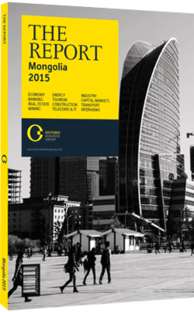Garments & textiles
The Company
Gobi was established in 1981 with Japanese economic and technical assistance to process natural goat and camel hair and produce cashmere and camel wool products from these fibres. The company has since developed into one of the five largest cashmere producers in the world, and currently employees around 1000 people.
Gobi was partially privatised in 1993, when 26.5% of its equity was floated on the Mongolian Stock Exchange. In July 2007 the remaining shares were sold for $13.85m to a Japanese consortium, Toshisoke Investment Bank and HS Security.
The company currently exports its products to more than 200 companies across 40 countries, where they are sold at a variety of retailers and boutiques in 20 major cities around the world, including New York, Tokyo, London, Paris, Berlin, Hamburg, Milan, Brussels, Prague, Moscow and Seoul. Gobi also exports semi-processed goat hair fibre to English, Italian, Japanese and American textile producers to produce finished goods. In the domestic market Gobi sells its own finished products through nine outlets and five vendor companies, and through 24 outlets and 140 vendor companies in the international market.
Gobi has historically exported around 80% of its products – with 60% going to European countries through vendor companies. As of 2011, however, 57% of its sales were in the domestic market, as local demand was up and revenue from exports was lower than expected due to a jump in raw material prices. In the winter of 2009-10, the country experienced dzud – unusually low temperatures that transform the winter into a natural disaster, killing millions of animals. This pushed up goat fibre prices by more than 80% year-on-year (y-o-y) in 2010, and by over 30% y-o-y in 2011. Domestic sales have remained elevated, accounting for 63% of the company’s total in 2013.
Performance
According to management estimates, Gobi’s domestic market share of finished products has grown by 5-10% per year since privatisation, to reach 55-63% in 2013. Sales revenue reached MNT65.9bn ($39.54m) in 2014, for growth of more than 35% over 2013. Net income was also up over the period, from MNT7.1bn ($4.26m) to MNT10.49bn ($6.29m), a nearly 50% increase.
Gobi reported MNT99.98bn ($60m) in assets as of the end of 2014, up 23.1% over 2013 and roughly triple the level seen at end-2010. This growth has been driven by increases in fixed assets, as part of the company’s investments in technological improvements.
Development Strategy
In addition to increasing its market share, Gobi has invested heavily to build up a luxury brand by improving its quality and design. The main strategic focus in 2014 was to optimise the workflow and further develop the company’s operating processes. In the year ahead, Gobi will focus on being competitive with its new corporate structure, improving the quality of the products and implementing the Japanese Amoeba Management System, which seeks to identify and maximise profitability per hour. Gobi’s plans also include increasing its knitted goods sales by 25% to 500,000 pieces, boosting its whole-garment production to 100,000 pieces, and doubling the amount of sewn garments and fabrics sold.
The company recently purchased state-of-the-art machines to produce and knit thin-gauge cashmere threads in order to create thinner, lighter garments that are better suited for warmer climates or seasons in Europe and other export markets. In the last six years alone Gobi has invested MNT26.5bn ($15.9m) in new manufacturing equipment, with MNT5.3bn ($3.2m) invested in 2013 to purchase 20 manufacturing units for whole garment weaving.
Looking ahead, it is strategically important for Gobi to focus on improving its customer service and implementing the international quality management standard ISO 9001. The company is also planning to increase its market share in the Mongolia wool and cashmere production and sales market, from the 62.7% share it recorded in 2013 to 70% by 2014.
You have reached the limit of premium articles you can view for free.
Choose from the options below to purchase print or digital editions of our Reports. You can also purchase a website subscription giving you unlimited access to all of our Reports online for 12 months.
If you have already purchased this Report or have a website subscription, please login to continue.

